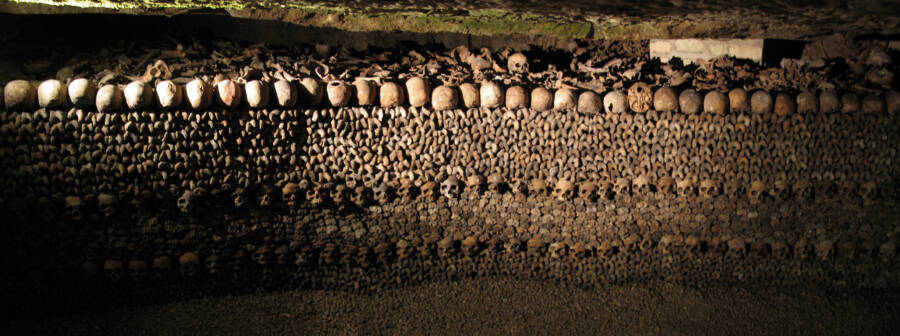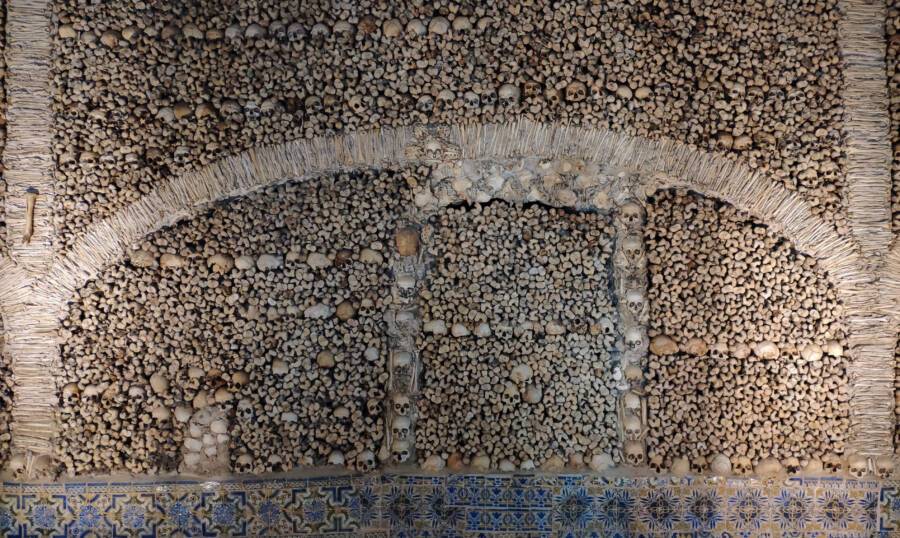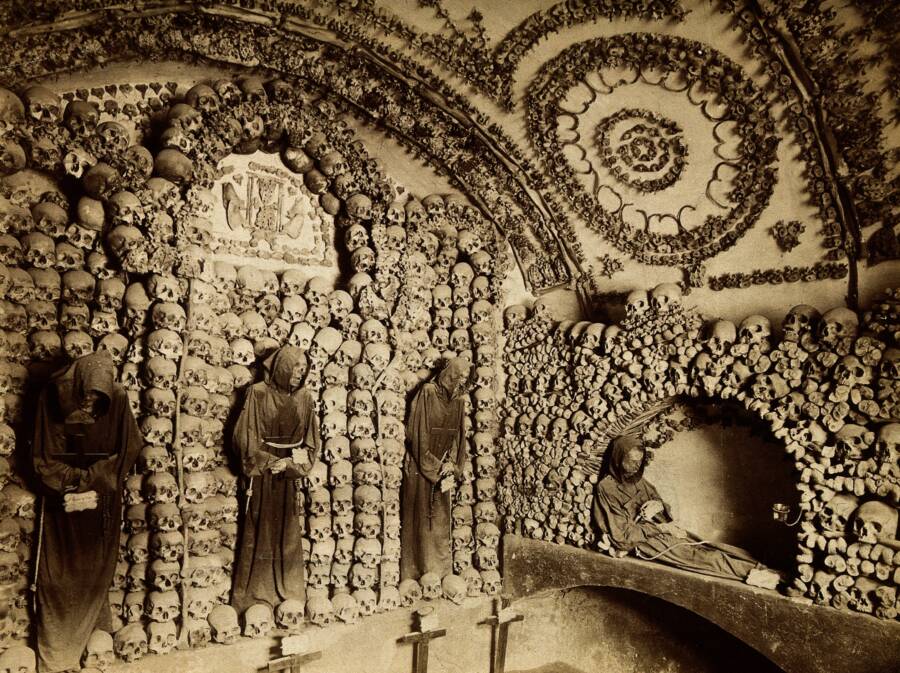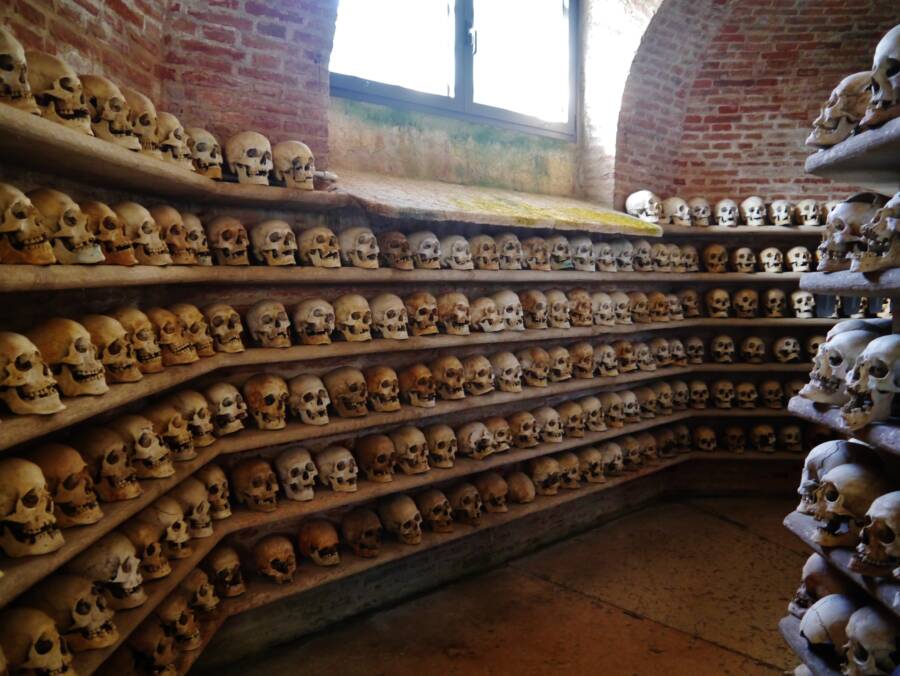From the Chapel of Bones to the Empire of the Dead, explore some of the spookiest catacombs on Earth with these eerie images.
Like this gallery?Share it :
When visiting some of the most beautiful cities in the world , it ’s sluttish to forget that catacomb sometimes lie beneath the streets .
Take Paris , for deterrent example . Though the French metropolis is famously recognize as the City of Love , perhaps it should also be call the City of Bones . The remains of 6 million Parisians dwell in underground cavern beneath the metropolis .

A panoramic image of the Paris Catacombs reveals a wall of bones. The remains of an estimated 6 million Parisians lie in the catacombs beneath the city.
Rome also has over 40 catacomb hidden beneath its streets .
But the public ’s creepiest catacomb are n’t only found in France and Italy . Malta , Peru , and Tunisia are also home to some frightening crypts . See some of the most intriguing pic of these tombs in the art gallery above .
The Early History Of Catacombs
Some of theoldest catacombsin the world are in Rome . Built during the 1st century , these crypt were clandestine grave used by Jewish families . The Romans outlawed burial within the urban center wall , so catacombs became a pop way for these families to lie their have it off ones to rest .
By the 2nd century , Christians also began using catacombs to bury their idle , fit in to the BBC . Since Christianity was illegal in Rome back then , the city ’s early catacombs were often locate beneath land owned by Christians , where the papist authority would not find them .
Many sometime catacomb across the former Roman Empire particular date from the 2nd to 4th 100 . But the epoch of catacombs finally came to an terminal .

Elliot Goodrich / Wikimedia CommonsWhile most catacombs were build underground , some were carve now into born organization like mountains . These Lycian grave in Turkey date from the quaternary century .
When Christianity became the official religion of Rome at the end of the 4th hundred , the practice of burying the dead in underground tunnels slowly died out . Instead of using hidden crypts , Christians held funeral above ground .
Therefore , many of Rome ’s secret crypts were misplace . But Renaissance - era digging began to uncover over 40 burial tunnels in the city .

However , not all of the world ’s crypts were hidden from the public for one C . And some of the most renowned catacomb are far more modern .
The Creation Of The Paris Catacombs
In the 17th and 18th century , Paris experience a population boom . And before long , the urban center was running out of home to bury its dead .
Overcrowding in Paris ’s cemeteries became a major problem due to the olfactory perception . Local perfume stores complained that potential customer flee because of the malodour , according toSmithsonian Magazine .
And in 1780 , heavy rains led to the collapse of a cemetery rampart , causing drained bodies to flood a Paris neighborhood , much to the dismay of resident .

France ’s kings tried to relocate cemeteries outside the city walls — an sound reflection of ancient Roman praxis . But the Catholic Church refused .
Paris needed a solvent . And former quarries located under the metropolis offered one . In 1786 , government begin to move thousands of body from cemeteries like Les Innocents to the ancient tunnels . For about 12 year , assurance cart organic structure underground , filling the burrow with osseous tissue .
Over the years , the catacombs became home to the remains of 6 million Parisians . Some of the old bones date back over a millennium . But after 1860 , Parisians stop burying the dead in their cloak-and-dagger crypt .

visitor today can enter theParis Catacombs , but only about a mile is subject to the public . And those who dare to hazard inside are met with an eerie warning . A sign hangs over the underground entrance to the tunnels : " Arrête , c’est ici l’empire de la mort ! " ( discontinue ! This is the empire of death ! )
Rediscovering The World’s Lost Crypts
Though most catacombs from the 17th , 18th , and 19th one C are well known among the public , many of the human race ’s previous crypt were often lost for 100 of years . So , how did people rediscover those underground tomb ? Typically , it was a intermixture of mining piece of work , curiosity , and portion .
One example is the oeuvre of Antonio Bosio , an archeologist who fall into the entrance of a Roman tunnel in 1593,according to theWorld History Encyclopedia . At the sentence , the entrance had been opened , but no one sleep with what lay beneath — until Bosio rediscovered the city ’s catacomb .
For centuries , the Roman tomb had been untouched by homo . Bosio find a maze of burrow and grave , gain him the deed " Columbus of the Catacombs . " But he was far from the only one who discover long - lost crypts .

rediscovery like these would remain well into the twenty-first century .
Zairon / Wikimedia CommonsIn addition to underground catacombs , many European cities have ossuaries , or rooms that store human bones . These skull come from an ossuary in Verona , Italy .
In fact , the secondly - largest ossuary in Europe remained hidden until 2001 . Lost for centuries in the Czech Republic , the bone - filled rooms were reveal thanks to renovations at the Church of St. James . Incredibly , the Brno Ossuary contains the corpse of 50,000 multitude .

Today , this ossuary is undefendable to the public .
Will we discover more catacomb in the hereafter ? For chiliad of years , multitude stored human remains in underground caverns all over the public . They build wall from bones . And they adorn tunnels with skull . The head is not if we ’ll discover more catacomb — it ’s when .
After looking through these eerie pic of the world ’s catacombs , research the chillingSkull Tower of Niš in Serbia . Then , con aboutRosalia Lombardo , the shockingly well - carry on minor mummy at the Palermo catacombs .











Elliot Goodrich/Wikimedia CommonsWhile most catacombs were built underground, some were carved directly into natural formations like mountains. These Lycian tombs in Turkey date from the 4th century.

Zairon/Wikimedia CommonsIn addition to underground catacombs, many European cities have ossuaries, or rooms that store human bones. These skulls come from an ossuary in Verona, Italy.

